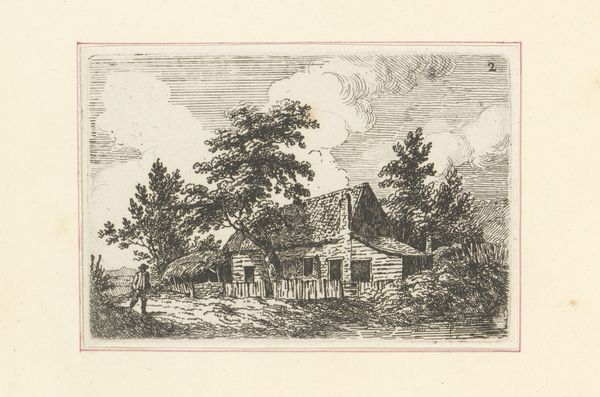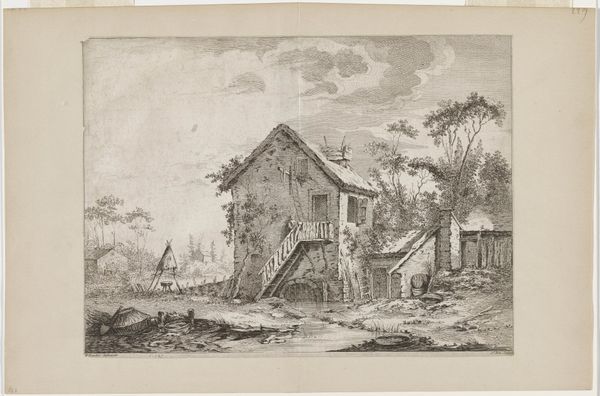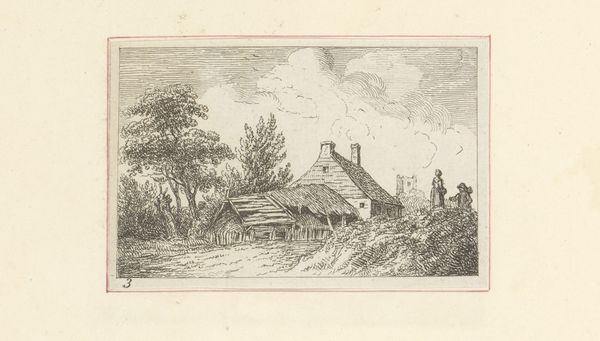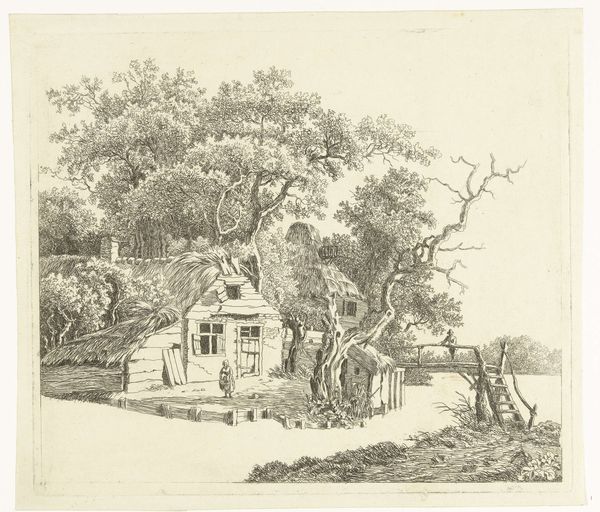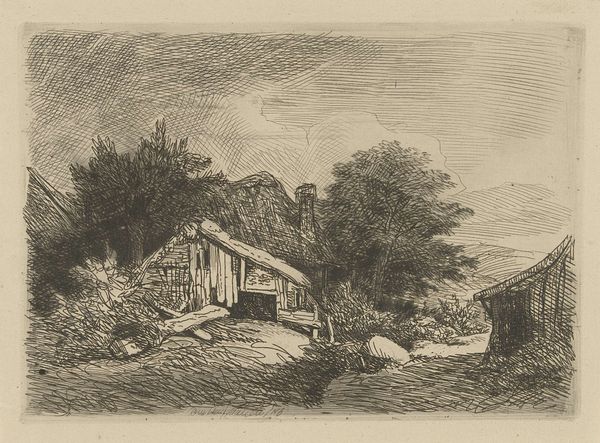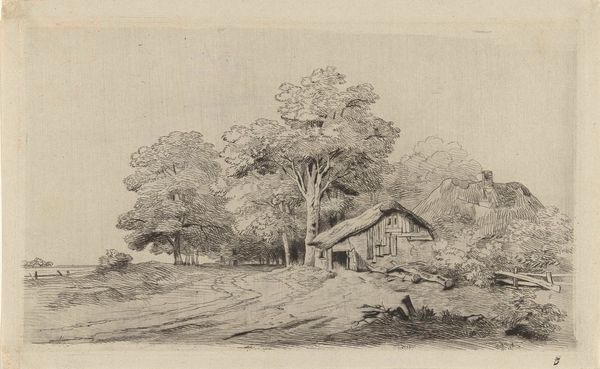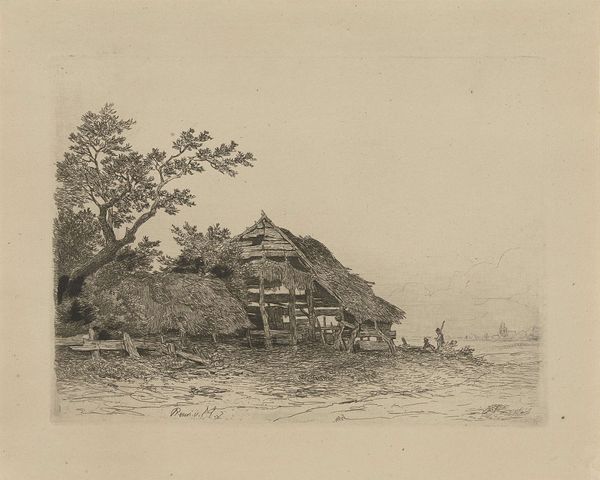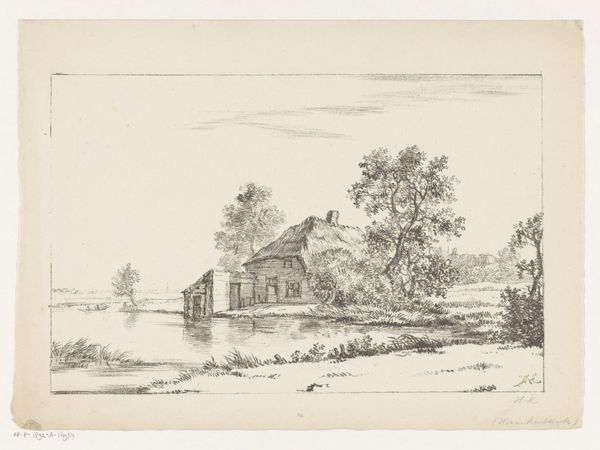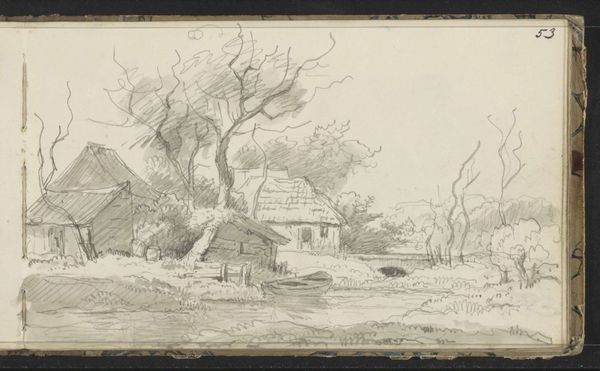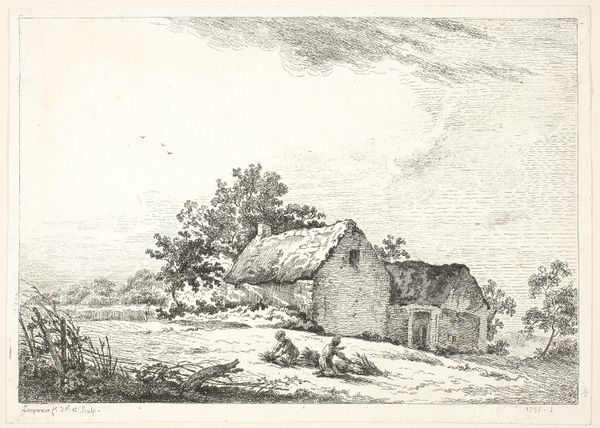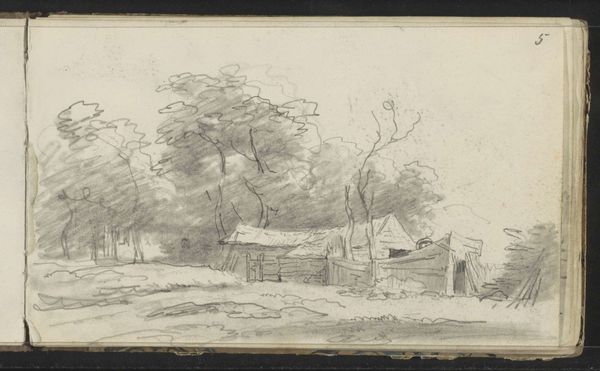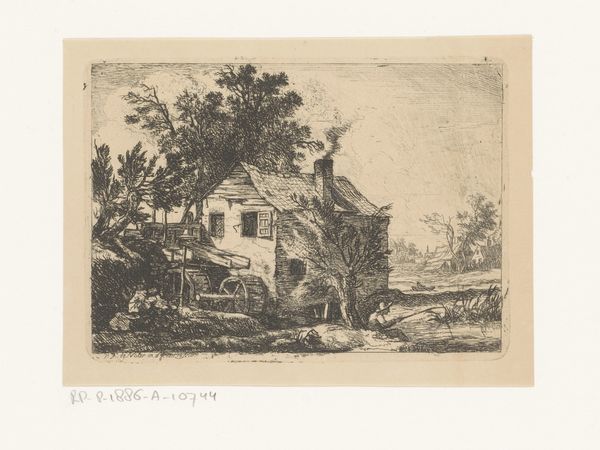
drawing, print, etching
#
drawing
# print
#
etching
#
old engraving style
#
landscape
#
romanticism
Dimensions: height 135 mm, width 184 mm
Copyright: Rijks Museum: Open Domain
Editor: This is Remigius Adrianus Haanen’s "Schuur in een landschap", an etching from 1848. It's quite detailed, a bit gloomy perhaps? There’s a dilapidated barn, some unruly trees, all in a very small scale... What do you see in this piece? Curator: Well, let's consider the context. Haanen was working during a time of massive social upheaval in Europe. This seemingly simple landscape actually speaks volumes about the anxieties surrounding industrialization and its impact on rural life. Do you notice the contrast between the wildness of nature and the structure, albeit decaying, of the barn? Editor: Yes, the barn almost seems swallowed by nature. Curator: Precisely. Haanen seems to be subtly commenting on the losing battle between traditional ways of life and encroaching modernity. How might this landscape also be reflective of power dynamics at play during the 19th century? Think about land ownership and labor. Editor: I hadn’t thought of it that way. The decaying barn could symbolize the vulnerability of those dependent on the land, a kind of commentary on the plight of rural communities during that period? Curator: Exactly! It makes us question whose land this really is, who benefits from it, and what future lies ahead for the people connected to it. Romanticism often idealized nature, but Haanen infuses it with a quiet, almost melancholic, social critique. It makes you wonder how those structures affect power. Editor: This is far more layered than I initially thought. I was only really noticing its gloominess at first! I realize that examining the artwork’s background expands the view considerably. Curator: It’s about looking beyond the surface and thinking critically about what the artist might be trying to convey about their world and society through the canvas. Every image can contribute to intersectional narratives if we only inquire.
Comments
No comments
Be the first to comment and join the conversation on the ultimate creative platform.
